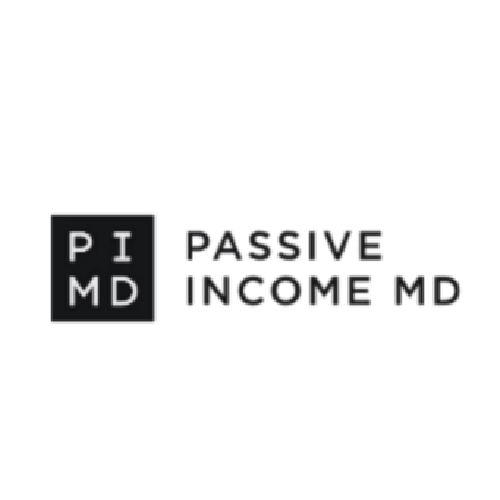Multifamily real estate has consistently proven to be a robust investment, especially during economic uncertainty. Over the past two years, marked by rising interest rates and market instability, multifamily properties have reinforced their resilience as a hedge against inflation. As the cost of goods has escalated and new construction projects have slowed, we’re seeing a potential shift with the Federal Reserve hinting at possible rate cuts in the near future. This change could reignite new multifamily development, offering a timely opportunity for investors. In this article, we’ll explore the benefits of investing in new multifamily construction and why this moment could be the perfect time to capitalize on these emerging opportunities.
Navigating Investment Options: Established Properties or New Construction?
When investing in multifamily real estate syndication investment opportunities, you have two main strategies: acquiring existing properties or pursuing ground-up developments. Each approach offers distinct benefits and challenges.
Acquisition of Existing Properties:
When you acquire an established property, you quickly identify potential candidates, conduct due diligence, negotiate purchase terms, and finalize the transaction. This method enables you to enter the market faster since the property is already built and often operational. You can start generating cash flow immediately, benefiting from established tenants and existing infrastructure. This approach is advantageous if you want to realize returns quickly and minimize initial risks.
Multifamily Ground-Up Developments:
Conversely, ground-up developments involve constructing new properties from scratch on vacant land or redeveloping existing structures. This process includes site selection, feasibility studies, securing permits, arranging financing, and managing construction. Although a new development deal does not produce cash flow during construction due to the absence of tenants, it offers the potential for higher returns. The business plan for a ground-up development is divided into three phases: planning and projecting, breaking ground and construction, and monetizing and stabilizing.
Benefits of New Development Deal Investments
Shortened Timeline
New development investments often result in shorter hold periods than acquisitions because they execute their business models more quickly. Unlike a new build, an acquisition takes time to add new value to the property before the asset can show higher revenue, making it lucrative enough to sell. Typically, investors hold onto acquisitions for 5-7 years, while new construction is held for three years. This allows investors to access their returns faster and deploy them into other investments.
Higher Potential Returns
Investors benefit from multifamily development deals by recouping their capital more quickly and enjoying the potential for higher returns. This advantage arises from the developers’ ability to manage and control construction costs effectively. By staying within budget and making strategic decisions about design and construction, developers help ensure that investors reap the rewards of cost efficiency. With any passive investment, this is an opportunity to gain residual income.
Additionally, developers are crucial in setting rental rates and lease structures that align with current market demand. This careful planning maximizes revenue potential and attracts high-quality tenants, further enhancing the property’s profitability. As a result, investors can enjoy accelerated returns and increased profitability, driven by the developers’ expertise in cost management and market alignment.
Tax Advantages
Investing in multifamily properties, whether through acquisition or new development, offers several valuable tax benefits. One significant advantage is the ability to depreciate the asset, which can lead to substantial tax savings.
In new multifamily developments, the property starts to depreciate as soon as it is placed in service. This depreciation expense helps offset the income generated by the property, reducing the taxable income for investors. With Viking Capital, this benefit extends to our Limited Partners (L.P.) investors, who can enjoy the tax advantages of any of our real estate syndication investment opportunities.
Beyond standard straight-line depreciation, which spreads the cost of the property over a set period, investors can also take advantage of advanced tax incentive programs such as cost segregation studies. A cost segregation study allows investors to accelerate depreciation by identifying and separating personal property components and land improvements from the building itself. This process enables investors to claim bonus depreciation on these components, significantly increasing the immediate tax benefits.
These tax strategies not only reduce taxable income but also enhance cash flow by deferring taxes and potentially increasing returns. By leveraging both straight-line and bonus depreciation through cost segregation, investors can maximize their tax savings and improve the overall profitability of their multifamily investments.
Market and Economic Advantages
Understanding economic market shifts and trends is crucial for making smart investment decisions, especially in multifamily real estate. Since 2022, high interest rates have significantly impacted new development starts, causing them to decline. From 2023 through the first half of 2024, rising costs of goods and elevated debt expenses sharply reduced new development projects. This slowdown has created a supply gap, with new housing unable to keep up with growing demand.
This market trend presents a strategic opportunity for multifamily new development investments. The current shortage of new projects means that demand for housing will likely drive up rental rates and property values. Investing in new developments now allows you to capitalize on this imbalance and position yourself for potential gains as demand continues to exceed supply.
Moreover, a similar trend in the single-family housing market underscores the appeal of investing in apartments. The series of 11 interest rate hikes from 2022 to 2023 has made single-family homes unaffordable for many buyers, shifting demand toward rental properties. As more individuals and families seek multifamily rentals instead of purchasing homes, investing in new multifamily developments offers a timely and lucrative opportunity.
Strategic and Long-Term Benefits
When considering multifamily new development investments, it’s important to recognize the compelling advantages that set these opportunities apart. Unlike older properties, newly developed assets offer substantial potential for value appreciation. The modern features and cutting-edge design of new developments typically attract higher market value, resulting in greater appreciation over time compared to older properties. Investors can benefit from this appreciation as the property’s value rises with market demand for newer, high-quality housing.
In addition to value appreciation, multifamily new developments provide significant scalability benefits. Investing in new, larger properties allows you to expand your investment portfolio more efficiently. Large-scale, professionally managed multifamily properties often come with economies of scale, which can reduce per-unit operating costs and enhance overall profitability. These properties also tend to attract a broader range of tenants, including those seeking modern amenities and high-quality living environments.
These newer developments typically feature advanced property management systems and amenities that streamline operations and enhance tenant satisfaction. This professional management often leads to higher occupancy rates and more stable cash flows, further boosting your investment’s performance.
Conclusion
In conclusion, investing in multifamily new development opportunities presents a range of compelling benefits. These investments offer strong potential for appreciation, scalable growth, and enhanced return metrics, all while providing valuable tax advantages. As the market trends favor limited new supply and with the anticipation of imminent interest rate cuts, multifamily new development stands out as a strategic choice for investors. By capitalizing on these trends, you position yourself to leverage immediate and long-term gains in a dynamic and evolving market.
Ready to explore multifamily new development investment opportunities?
Check out Viking Capital’s newest investment opportunity: Peoria Gateway. A luxurious 200-unit apartment community set to debut in 2026.




















